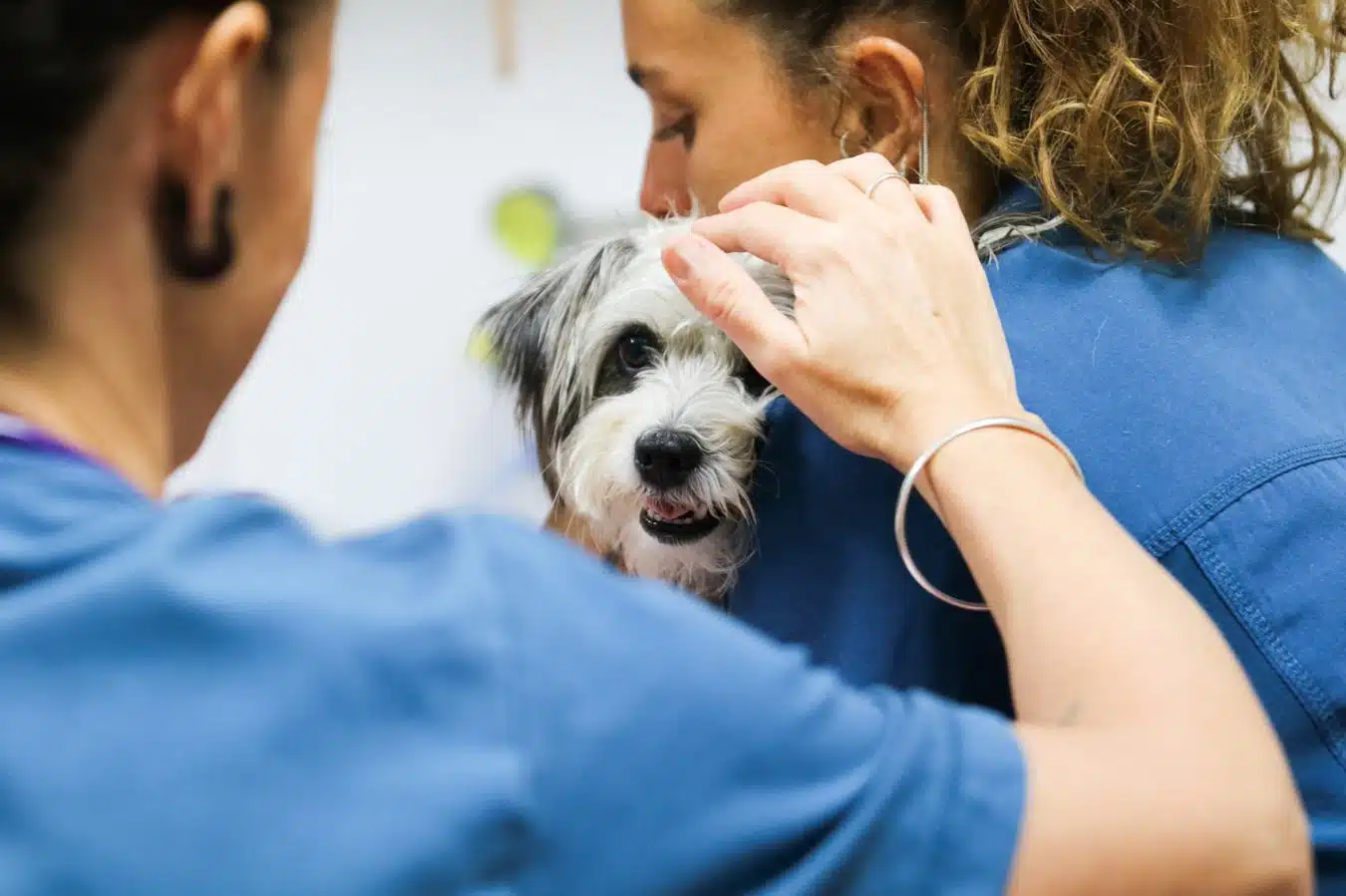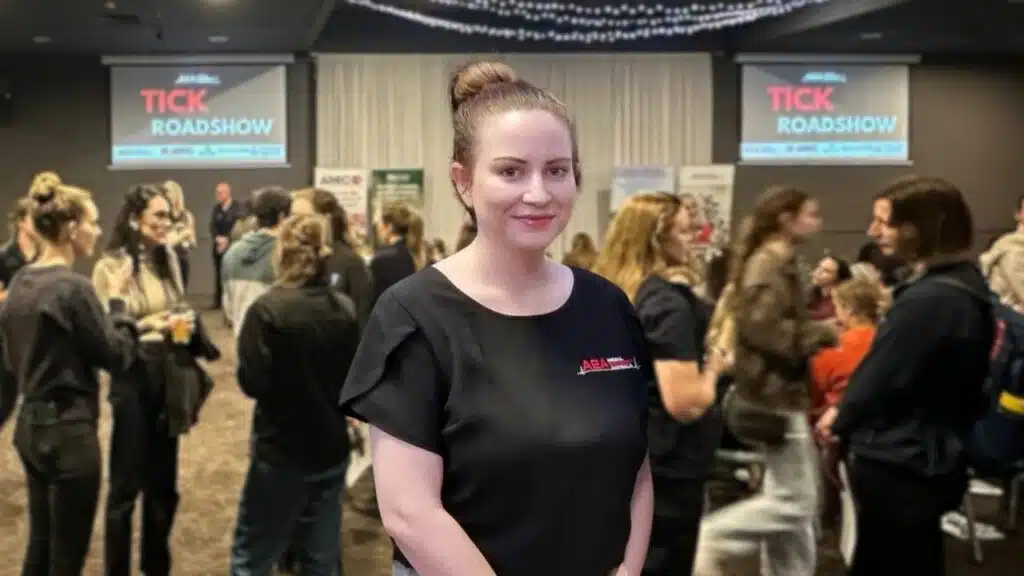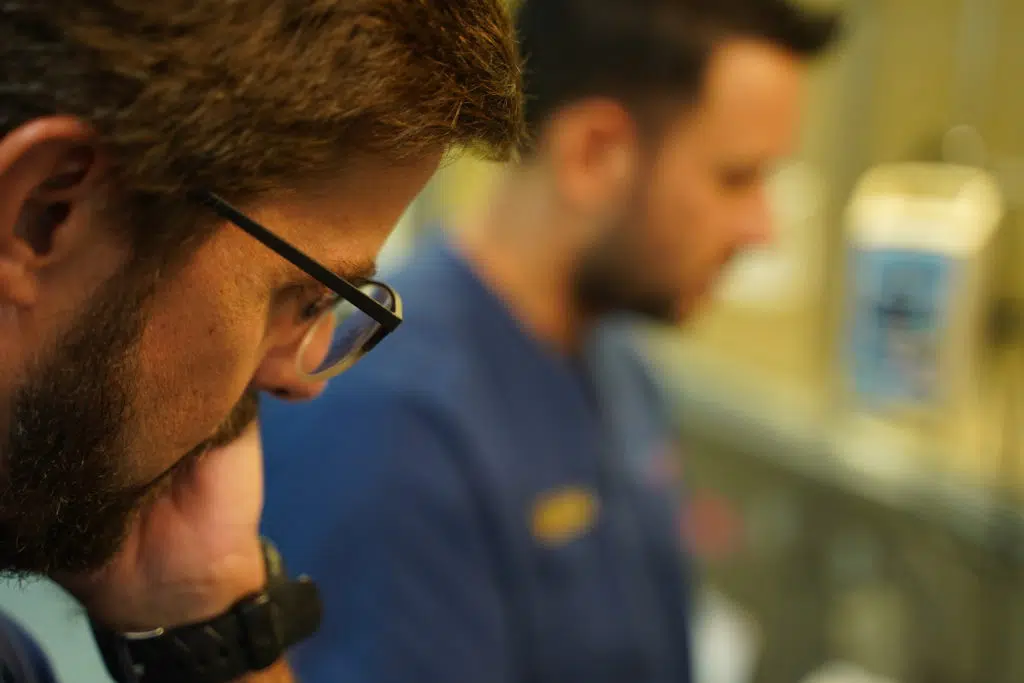For all of us who work in veterinary profession, our work provides us with insightful and eye-opening experiences. While in training – whether through vet school, TAFE, or even work experience – many of us build up pre-conceived notions of what veterinary practice is like. These veterinary misconceptions, although unintentional, can give us false ideas of the profession. Perhaps it’s the stereotype that veterinary professionals play with adorable puppies and kittens all day long? Or maybe it’s the impression that veterinary treatment is vastly more expensive than its human counterpart?
In reality, there are many veterinary misconceptions that we now know to be incorrect. Once we become actively involved within the profession, we gain valuable insight into the actuality of veterinary medicine. But how do you know that’s the case if you’re on the outside looking in? This is the view of the general public, with minimal knowledge of the intricate workings of the veterinary profession. Many misconceptions can become ingrained into those who only interact externally with veterinary services.
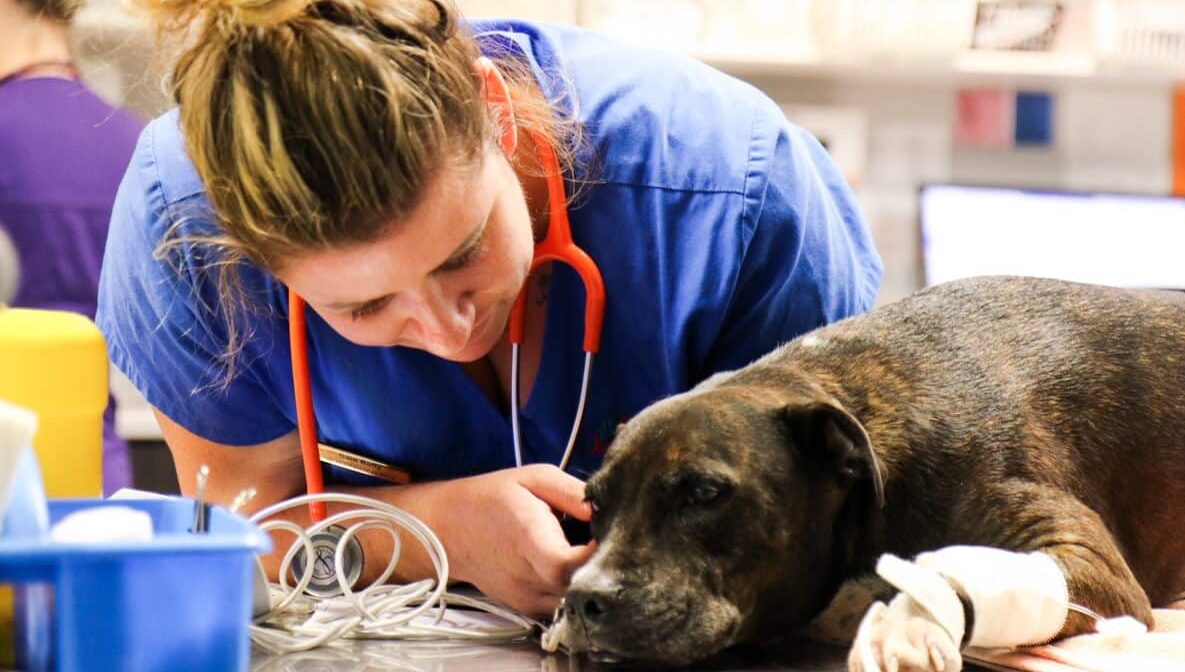
That’s why we’re going to explore and highlight 5 of the most common veterinary misconceptions of the general public. We’ll take a deeper look into why these exist, and what can be done to educate so that veterinary misconceptions might one day be a thing of the past.
So what are the 5 most common veterinary misconceptions that the general public might have about our profession? We’re starting off with a big one:
1. Vets Are Only in it For the Money
It’s a line that many veterinary professionals will hear time and time again:
“You’re only in it for the money.”
Why is it that this perception of veterinary professionals exists? Are we performing life-saving veterinary treatment purely with the motivation of money in mind? Strange as it seems, much of this attitude can be attributed to our healthcare system in Australia. When it comes to human healthcare, we’re thankfully able to receive a wide variety of medical treatment at subsidised rates, or at times even completely free of charge thanks to Medicare. We’ll discuss this in further detail later in the article.
So if vets really are “in it for the money”, it’s insightful to get an idea into actually how much veterinarians earn.
This can be done by taking a look at the Animal Care and Veterinary Services Award – a guideline as to how much veterinary professionals should be compensated for their work based on experience. Let’s first look at what it takes to even become a vet: a minimum 5 years worth of intense study, weeks upon weeks of self-funded clinical placement, and a looming HECS debt, with some course fees in excess of $300,000 before Commonwealth assistance[1].
And how much does that entitle vets to when they graduate? According to the veterinary award, a grand total of $28.75/hr, that’s a national median graduate salary of $55,600 per annum[2]. For your reference, we’ve also compared this to other graduate salaries in health-related fields in our infographic.
And what if that graduate has to work overtime, several hours beyond their standard shift? Yet again, it’s $28.75/hr. That’s right, as per the award, vets are not entitled to penalty rates for overtime (but are on public holidays).
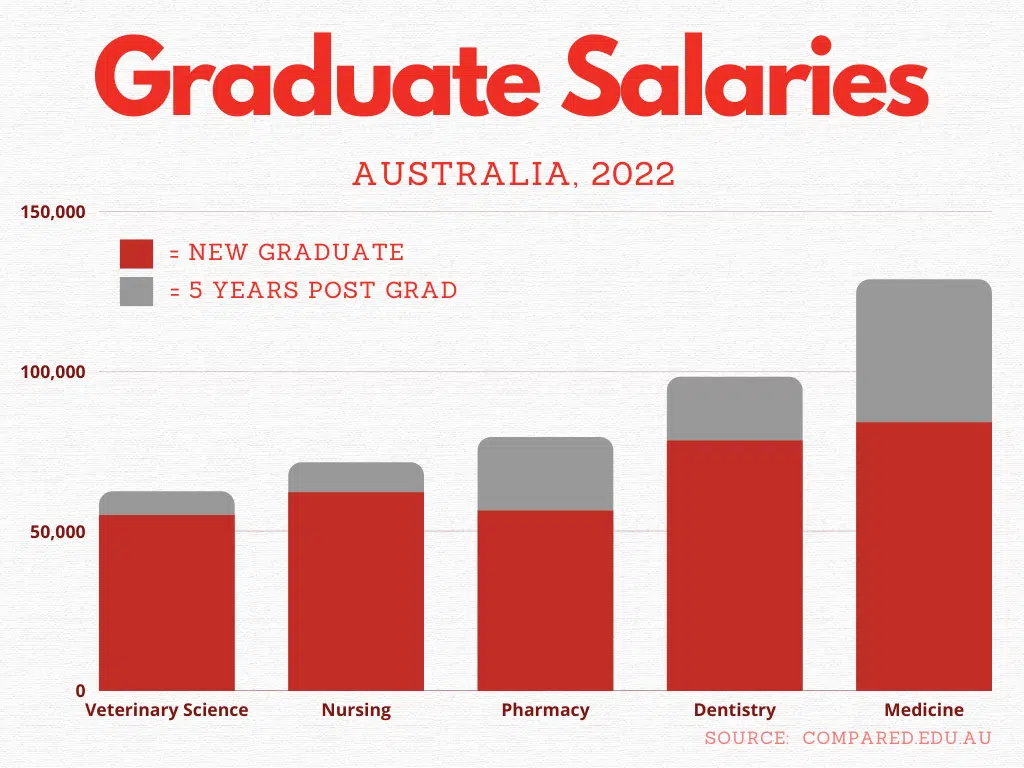
The pay gap widens when considering career progression as part of the award. Even with decades of experience, the maximum a vet can earn according to the award is just over $40 an hour, whereas the human medical equivalent is entitled to almost 5x that amount. That’s not to mention Veterinary Nurses too, whose award rates begin at just over $20 an hour and even with a lifetime of experience can only ever earn a maximum of $27.02 an hour.
Taking a deeper look at veterinary salaries, a recent survey of the Australian veterinary profession revealed that “36 percent of vets are dissatisfied with their pay, calling out that it does not compare favourably to the remuneration received by other professions and fails to reflect the valuable skills and expertise of veterinarians.”[3]
While veterinary professionals are not solely in it for the money, it’s important to be compensated for what you’re worth. We’ve all put in years of training and experience as veterinary professionals after all. So seek out a workplace that’s willing to pay above award, be open about discussing salaries, and provide adequate compensation for your time worked outside of standard work hours.
2. All You Do Is Cuddle Puppies and Kittens All Day
Now let’s move away from financial discussions and talk about a topic everyone loves: puppies and kittens. They’re certainly a highlight of being a part of the veterinary profession. Nothing beats a consult where the first thing you see is an adorable litter of pups being carried through the door, or hearing the mews of tiny kittens echoing through the clinic during their first visit to the vet. But do we really just cuddle them all day?
While that might be the view for some, the reality is that we also see them and help them through their very worst. Many vets even help them into this world, performing c-sections at the end of a long day, in the middle of the night, and sometimes on days off. And for every healthy puppy starting off with a supportive family, we’re also privileged to be able to treat those battling with life-threatening disease, parasitic-inflicted illness, and a wide range of genetic abnormalities requiring management.
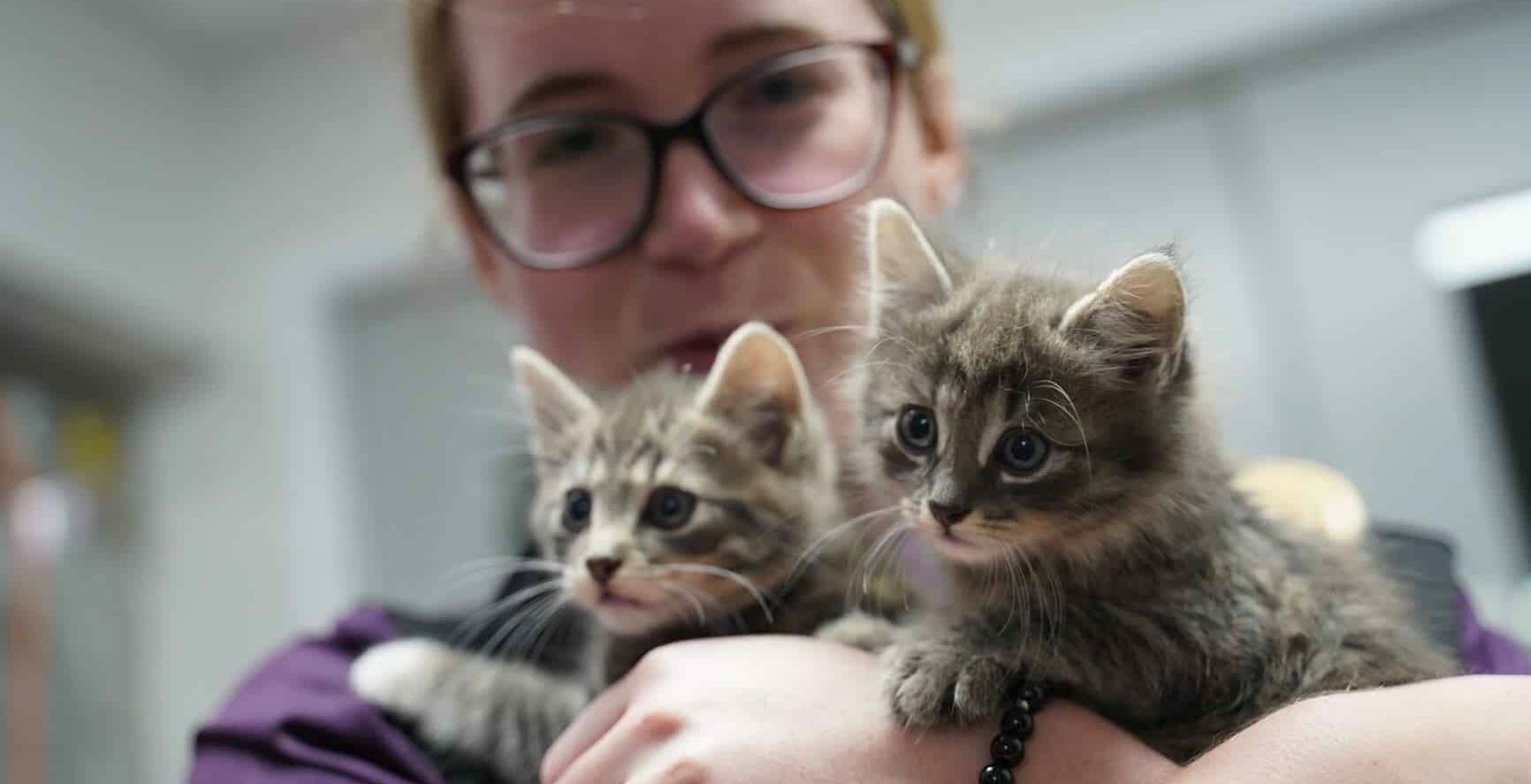
We’ve all encountered our fair share of malnourished, flea-ridden pups, or the stereotypical congested and crusty cat flu-afflicted kitten. But nothing beats the satisfaction of helping them overcome their illness and watching them begin to thrive. Seeing puppies and kittens is also an incredibly important part of the job beyond focusing on the physical wellbeing of the animal. In fact, the first visit with a puppy or a kitten turns the consult room into a learning environment.
For many new owners, owning a new puppy or kitten can be an exciting yet daunting situation, and as veterinary professionals it is our responsibility to educate all owners and share our knowledge. With our guidance, we can ensure these animals lead long and healthy lives with ideal husbandry and effective management of illness. But let’s be real, cuddling them is still an important (and satisfying) part of the job.
3. Being a Vet is Easy
How many times have you heard a client mention, “When I was a kid, I always wanted to become a vet”? Many children dream of becoming veterinarians, as it provides them with the perfect opportunity to incorporate their passion for animals into a lifelong career path. It’s a profession that at times can be glamourised as attractive and rewarding, with the more challenging aspects being overlooked. And while many of us wouldn’t choose any other career, that’s not to say it’s an easy job.
It begins before entering the veterinary workforce – studying to become a vet requires serious dedication. Years of persistence across thousands of hours of lectures, numerous practical workshops demanding physical skill, countless weeks of clinical placement away from family and friends, and not to mention end-of-semester exams. Even the pathway to becoming a vet in the first place is challenging before stepping foot into the excitement of clinical practice.
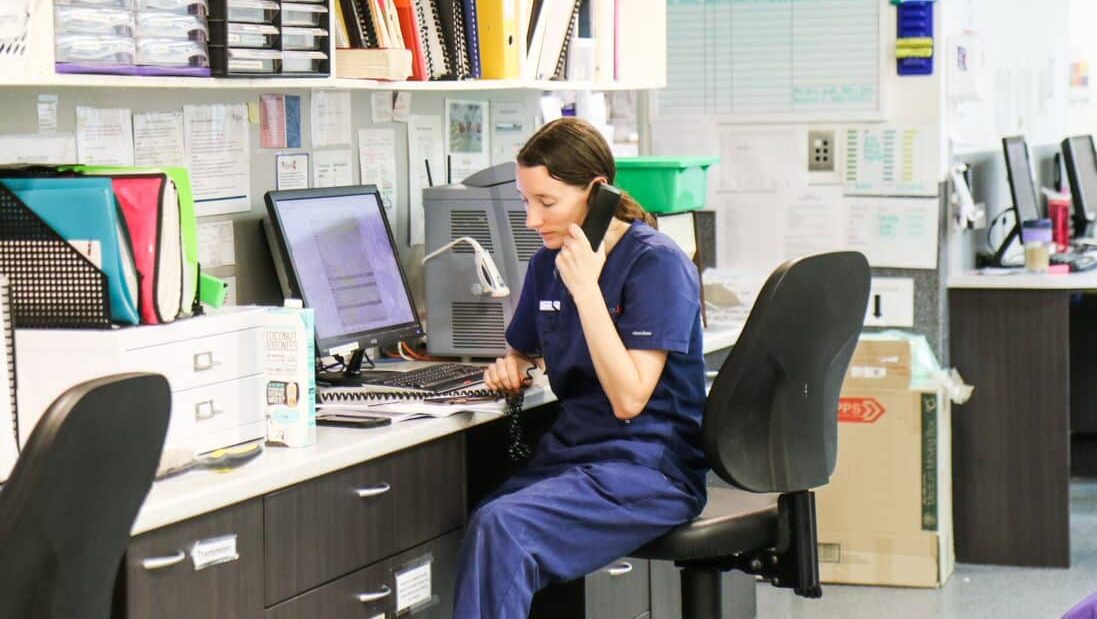
It’s important to help educate clients and the general public to step away from fantasising about working with animals, and instead focus on the realities that veterinary professionals face. In a study conducted by Professionals Australia[3], the workforce spoke out about veterinary employment, gathering the views of over 500 vets from all across Australia.
“While being a veterinarian is perceived as an attractive and rewarding career, the reality of a vet’s working life can be vastly different – characterised by long working hours, poor remuneration, stress and dissatisfaction.”
- Working arrangements: the majority of vets (58%) perform overtime each week, with over 20% performing excessive overtime of 5 – 15 hours weekly
- Compensation: despite the majority of vets performing overtime, only 44% were compensated for any of the overtime hours that were worked. Those who did were predominantly paid at the standard hourly rate
- Mental health: factors such as high stress, overwork, customer abuse and understaffing are documented as workplace mental health hazards, increasing demand for better workplace support.
These are just a few of the challenges facing the veterinary industry, driving us to create workplaces that are more supportive and aim to take measures to improve. With this knowledge, supportive workplaces will be willing to discuss and address these issues to provide the best possible working conditions for all veterinary professionals.
4. Veterinary Treatment is So Much More Expensive Than Human Medicine
While it’s true that healthcare comes with a cost, it’s important to understand that the expenses behind veterinary treatment go far beyond wage. A veterinary bill isn’t simply just paying the vet, it’s also accounting the wide variety of costs that go into running a clinic. There’s a considerable amount for a vet clinic to account for even before a pet sets foot through the door!
Here’s just a few of the expenses behind a simple veterinary visit:
- Entire clinic’s staffing and wages – nurses, receptionist, support staff
- Clinic location and building mortgage repayments / rent
- Repayments on costly medical equipment (imaging machines such as X-ray/Ultrasound/CT, lab equipment, microscopes, advanced surgical equipment)
- Variety of IT hardware, and software subscriptions so that the staff can continue to operate
- Insurance and veterinary licences/registration fees
- Perishable stock and consumables across the clinic (including medical oxygen)
- Utilities such as electricity, gas, and water

Clients also have to be aware that there’s no Medicare for pets, meaning the cost of medical treatment isn’t at all subsidised like when we make a trip to see our doctor. This means that receiving veterinary treatment for a pet is a more accurate reflection of the true cost of healthcare without any sort of rebate courtesy of the government. Unfortunately, many clients have the opposite view on veterinary costs, seeing them as artificially inflated in comparison to the prices we pay for our own healthcare.
Because of this, improved public education on the true costs of healthcare is vital. Not just to inform pet owners prior to adding a pet to their family, but to reduce customer abuse towards veterinary staff by managing pet owner expectations. The public must be helped to understand that while veterinary fees on the surface may seem expensive, this is simply the reality of medicine, and that veterinary professionals are not receiving this income directly.
5. You Don’t Actually Care What Happens to Your Patients
Lastly, this is the toughest misconception that many veterinary professionals face throughout their career: that we don’t care about our patients. It might happen as a result of a deteriorating patient, a procedure that doesn’t go entirely according to plan, or a bill that a client might have difficulty affording. In these situations, the accusation that veterinary professionals don’t actually care about pets gets thrown around a lot. It’s incorrect and it can really hurt.
Conversely, for the profession as a whole, many of us care about our patients too much. The concept of compassion fatigue is commonly discussed in the veterinary industry, as we develop deep bonds and empathy for our clients and our patients. Being part of an animal’s life, often from beginning to end, means that it can be impossible to avoid building a genuine emotional connection.
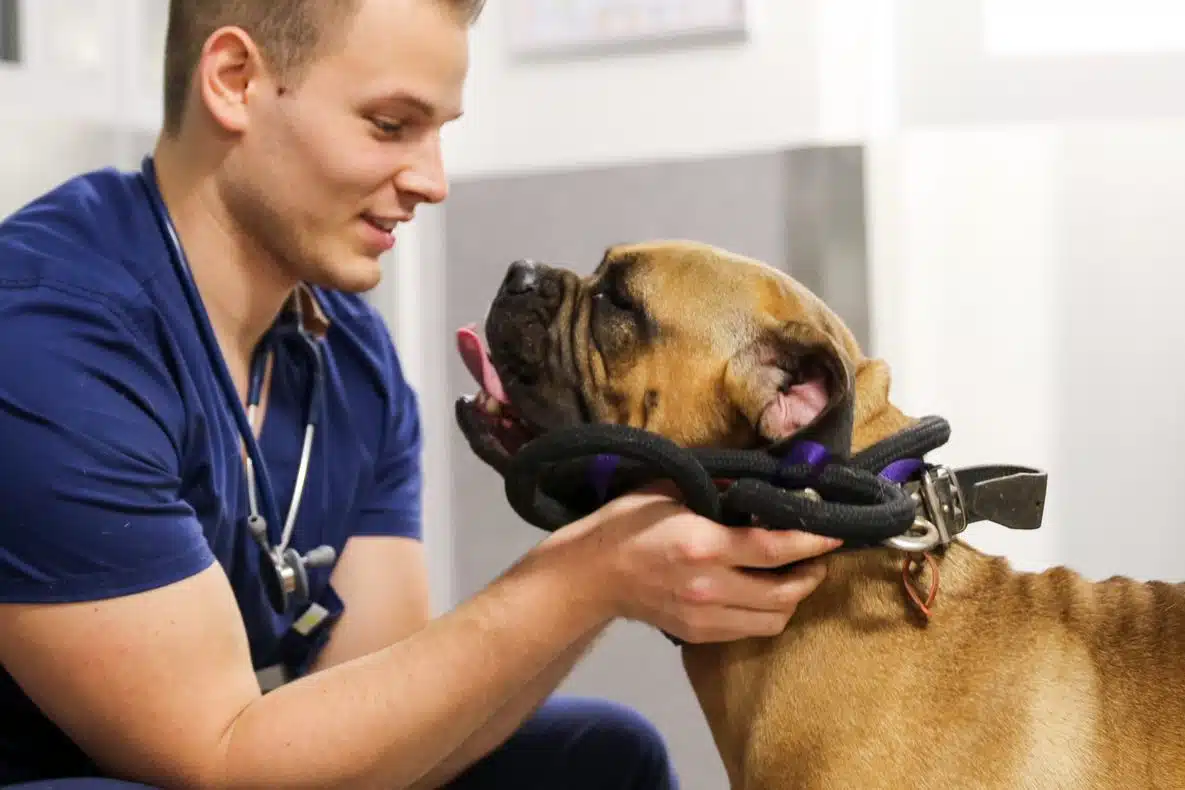
Frequently being the bearer of bad news requires a significant emotional input, only heightened through interaction with accusatorial clients. Therefore, mental and emotional wellbeing within the veterinary profession must be prioritised through educating our clients as to this reality. When faced with making life-changing moral or ethical decisions, the public should consider the impact they can have if they don’t treat their veterinary professionals with mutual compassion and respect.
These are just five of the many misconceptions that the general public might have about the veterinary profession, many of which we can overcome through effective communication and education with those outside the industry. By highlighting the reality behind these misconceptions and what it’s really like to be a veterinary professional, we can help our clients to understand our point of view and gain a deeper understanding. To read more other veterinary misconceptions, explore our article on The Challenges of Achieving a Veterinary Gold Standard (and how we overcome them).

Author: Dr Ben Schuster (BVSc)
Veterinarian, Digital Marketing Coordinator
Graduating from James Cook University in 2016, Dr Ben has worked across several small animal clinics in South East Queensland, incorporating a passion for avian medicine and behaviour into general practice. After exploring a variety of veterinary roles both in and out of clinic, Dr Ben joined the team at Animal Emergency Australia as an advocate for the profession and his veterinary colleagues.
Dr Schuster also has an interest in veterinary and digital marketing, has worked in a variety of veterinary campaigns across the industry, and also authors his own entertainment website. He is now the Digital Marketing Coordinator for Animal Emergency Australia and is responsible for providing our AEA network with the most up-to-date professional content in our AEA news library and valuable clinical content at VetAPedia.

